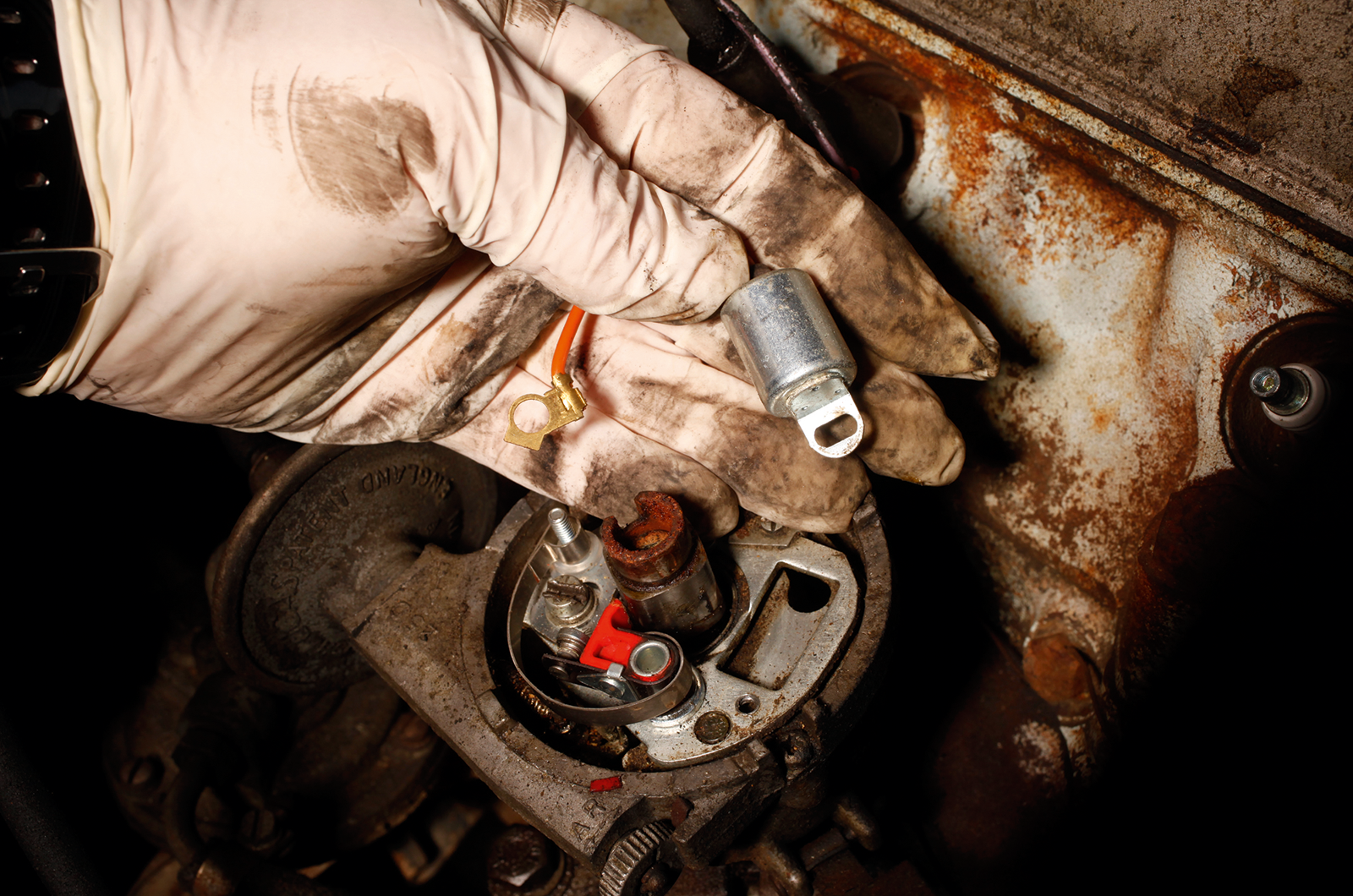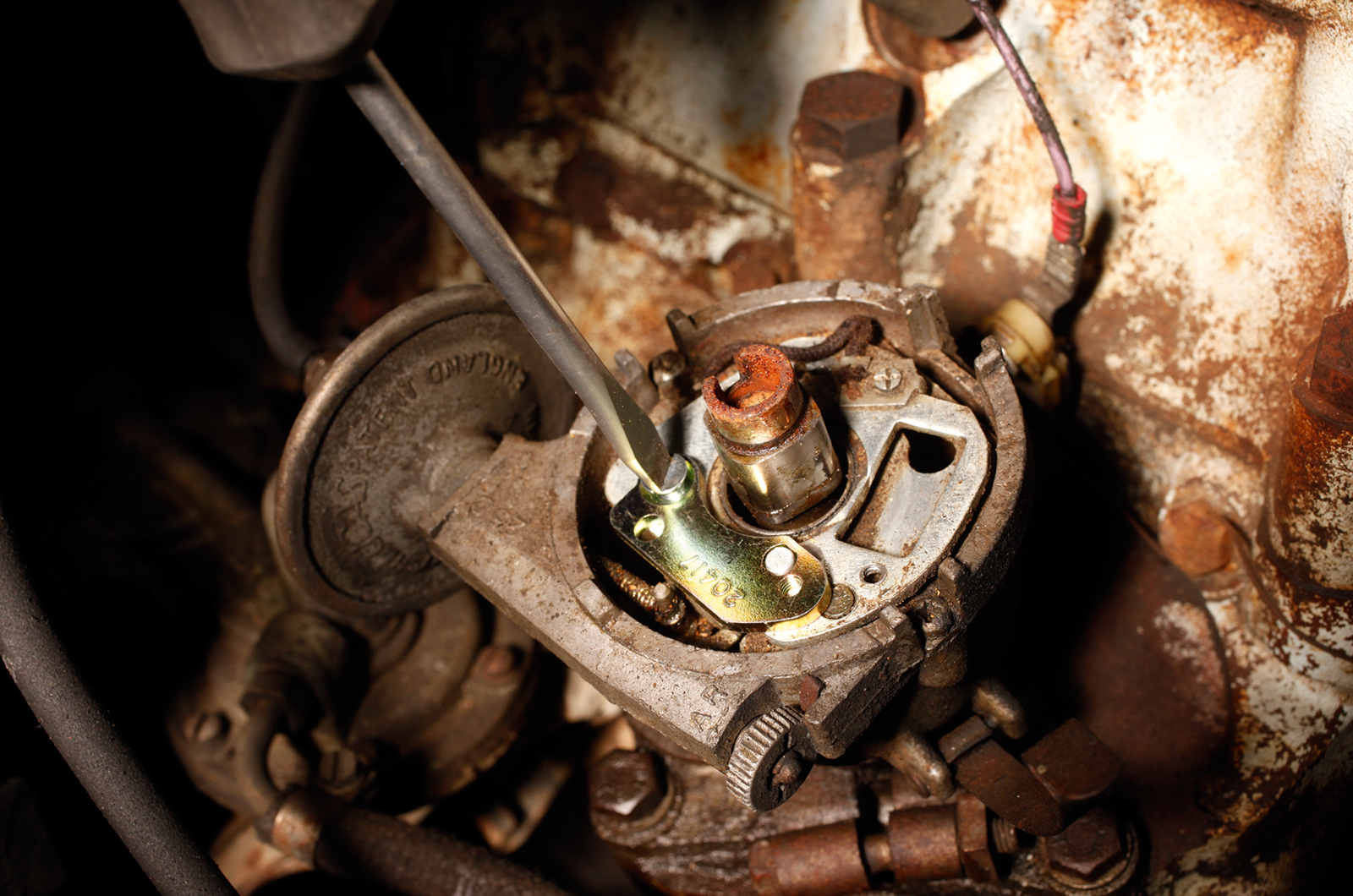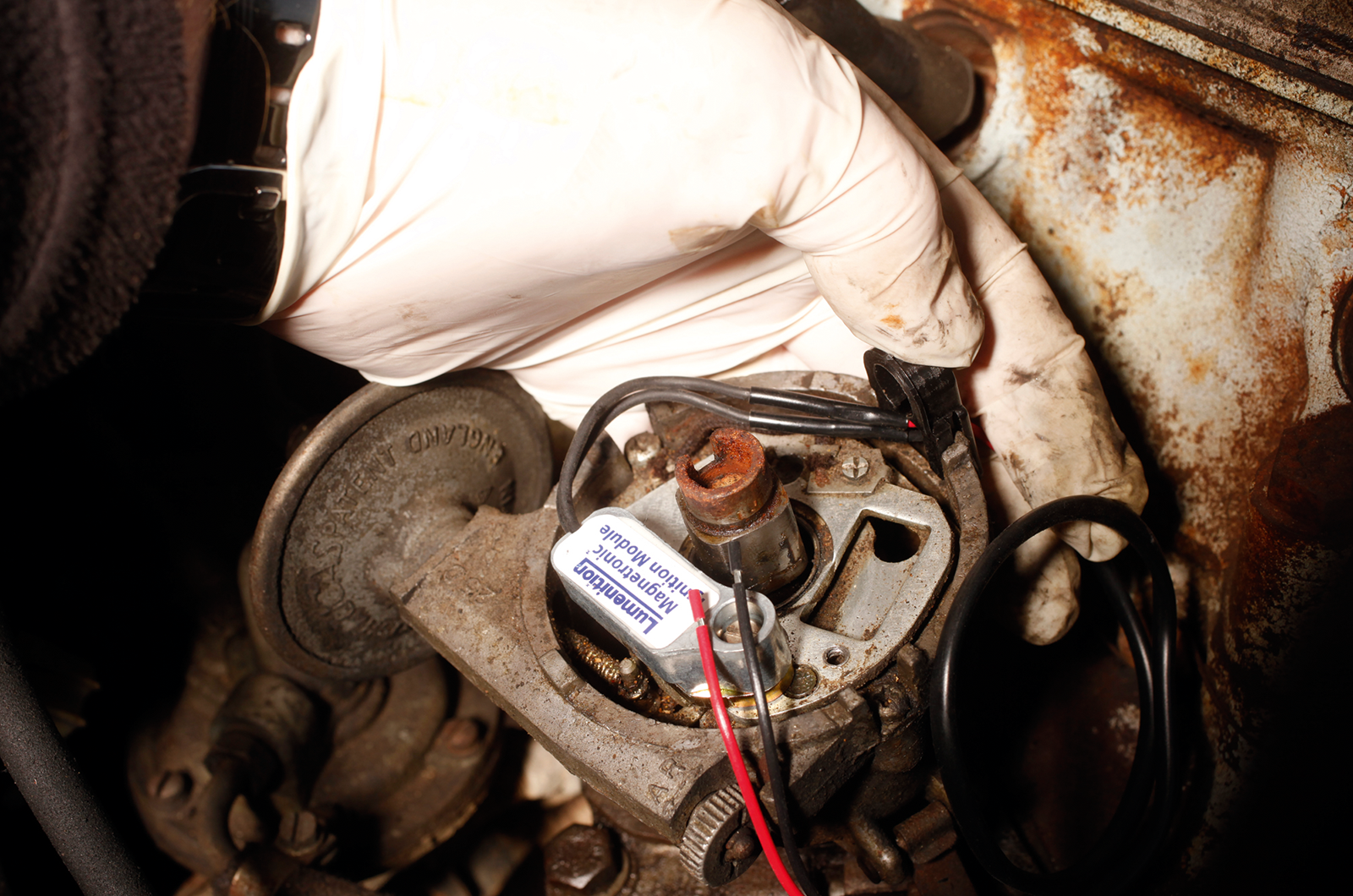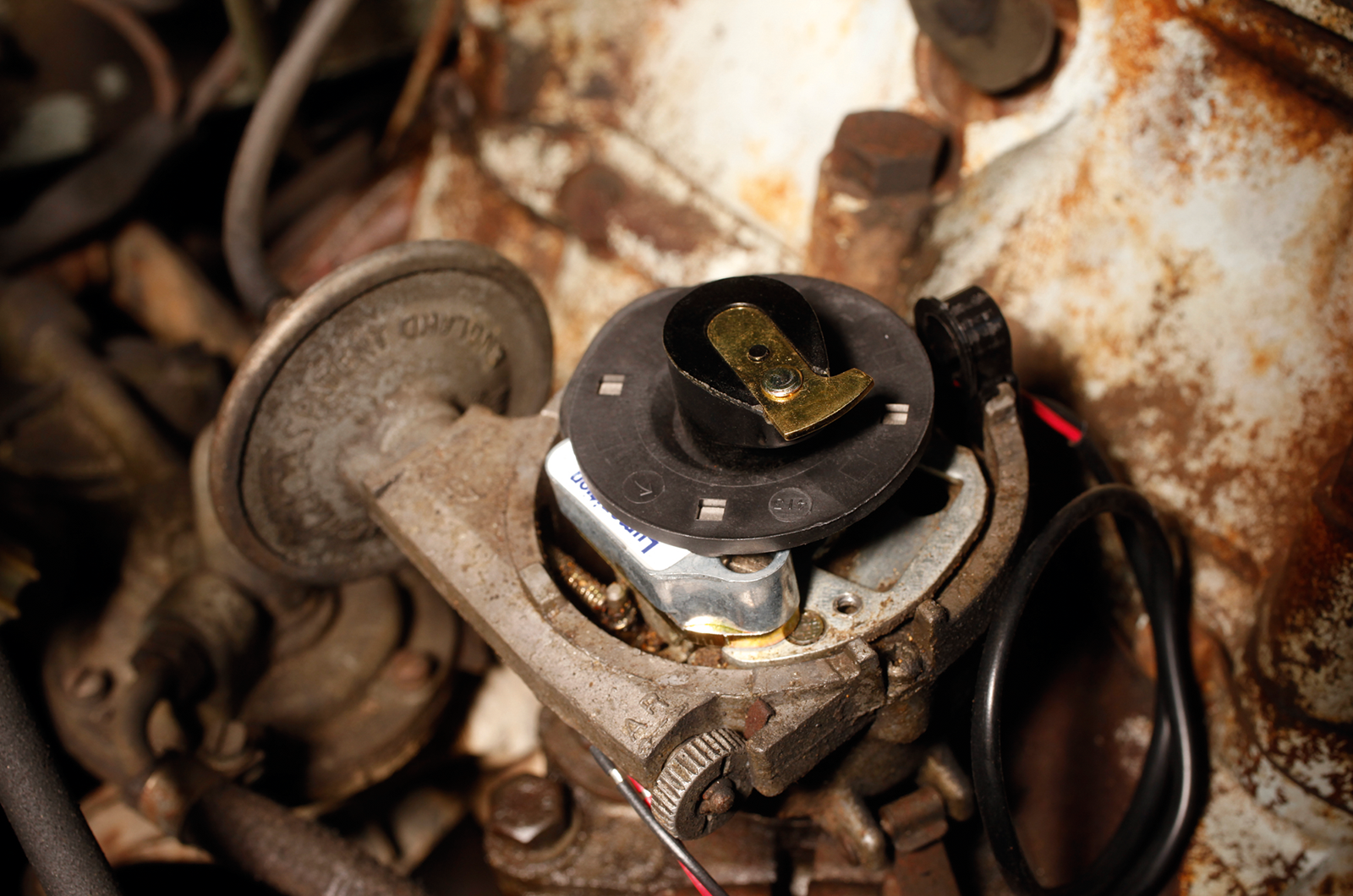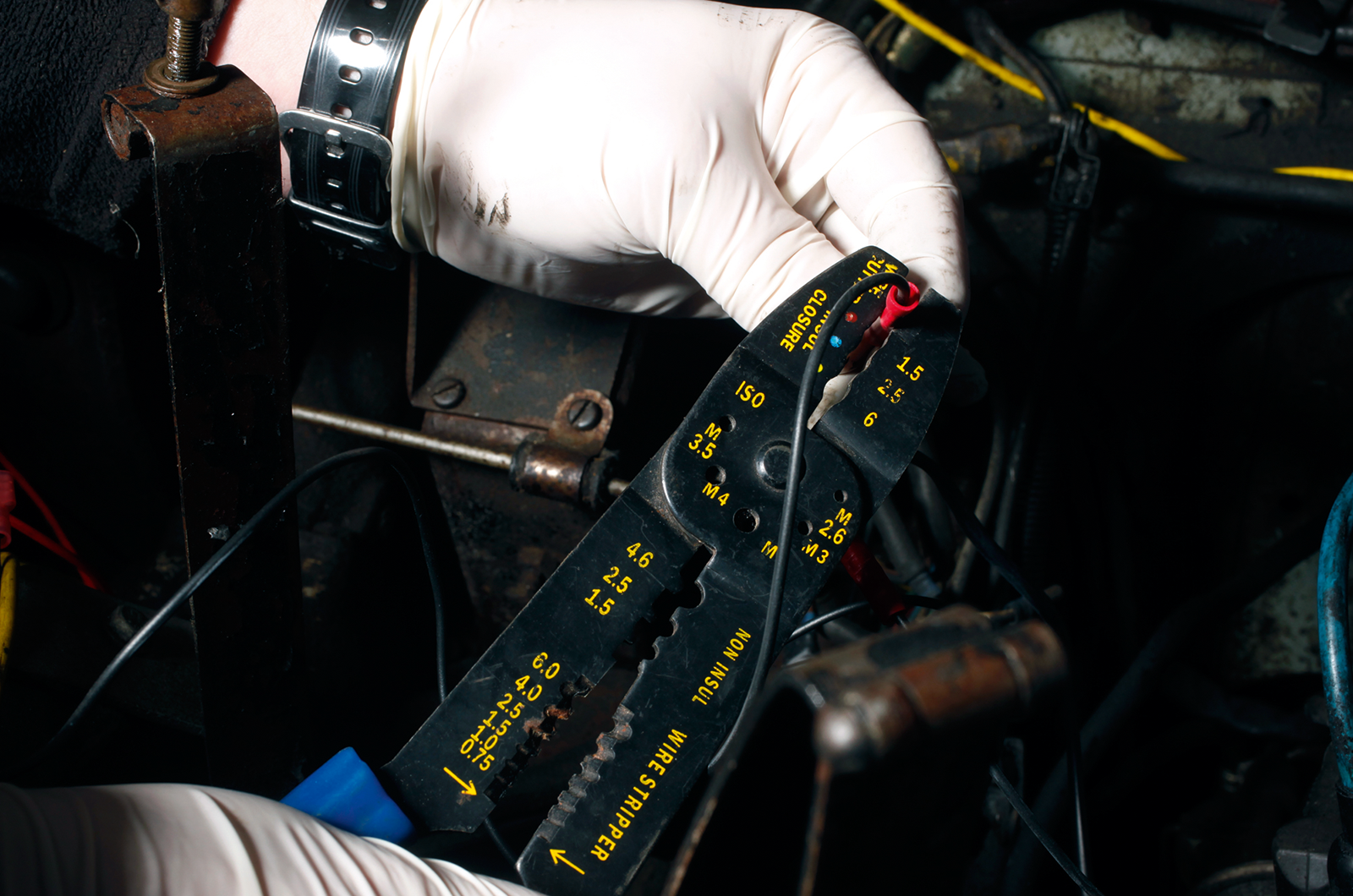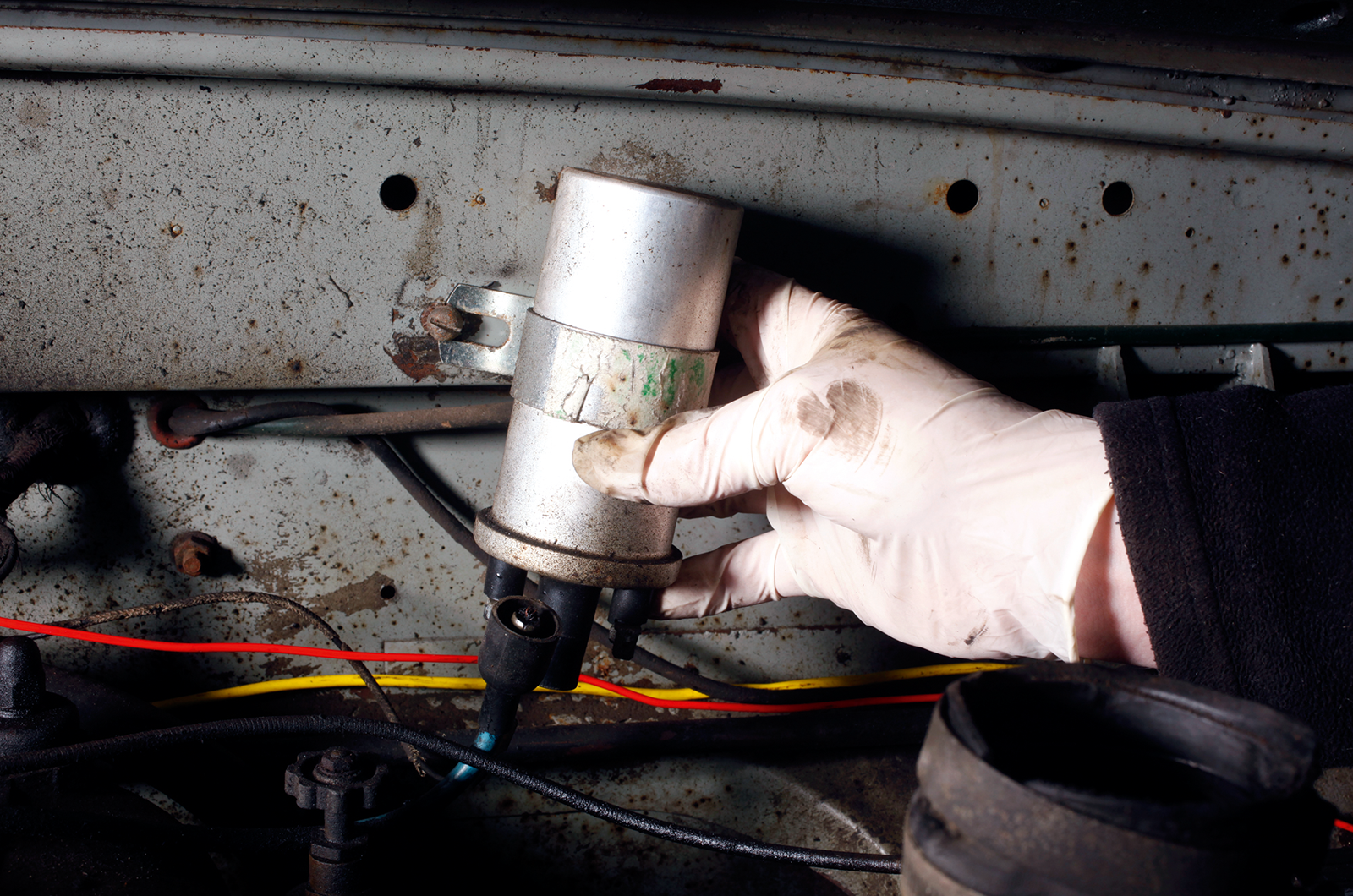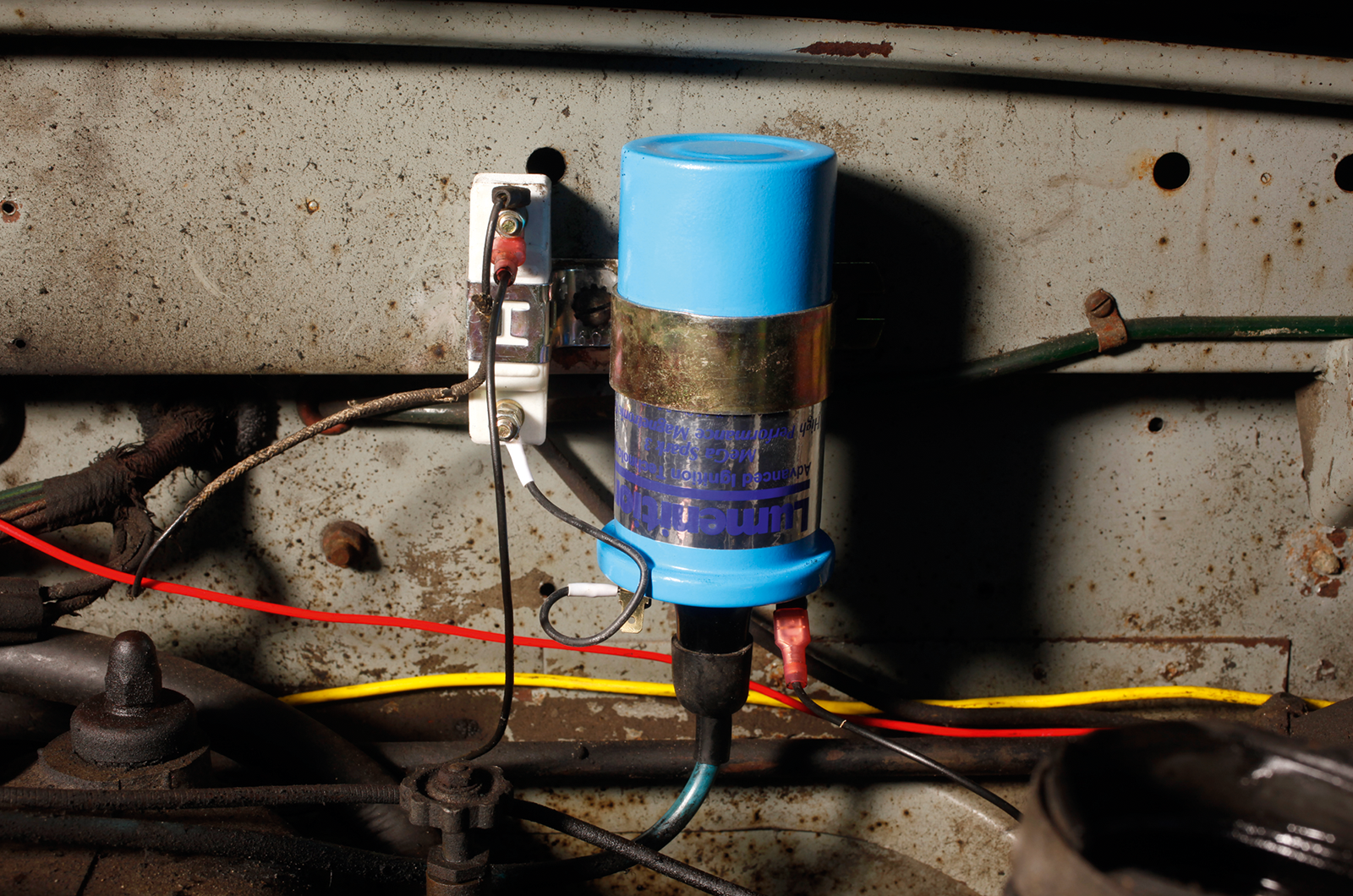
Most 1950s-’70s cars have contact-breakers or ‘points’ to optimise the delivery of the spark on each cylinder’s combustion stroke.
But points need regular adjustment to ensure that they close for the precise duration needed for the coil to charge between the breaks in the low-tension circuit that force the coil to deliver a spark.
Plus, the lower volumes now needed and use of inferior materials has led to poorer component quality and premature condenser failure, which can leave you stranded.
Electronic ignition has fewer moving parts, typically using an optical or magnetic (Hall effect) sensor to detect when the LT current needs to be ‘broken’.
Installation varies: some types bolt under the distributor cap (such as Lumenition Magnetronic and Aldon Ignitor), while others have a separate amplifier.
If your dizzy is worn out, an all-in-one replacement (such as 123ignition) also offers switchable advance curves, but the standard position on any unit should exceed OE settings.
Check the kit is the correct polarity for your car. Ensure the engine is correctly timed (for set-ups not replacing the distributor) and feel for any play in the dizzy shaft before starting. Test drive over the same route before and after to check performance.
1: UNCLIP DISTRIBUTOR CAP
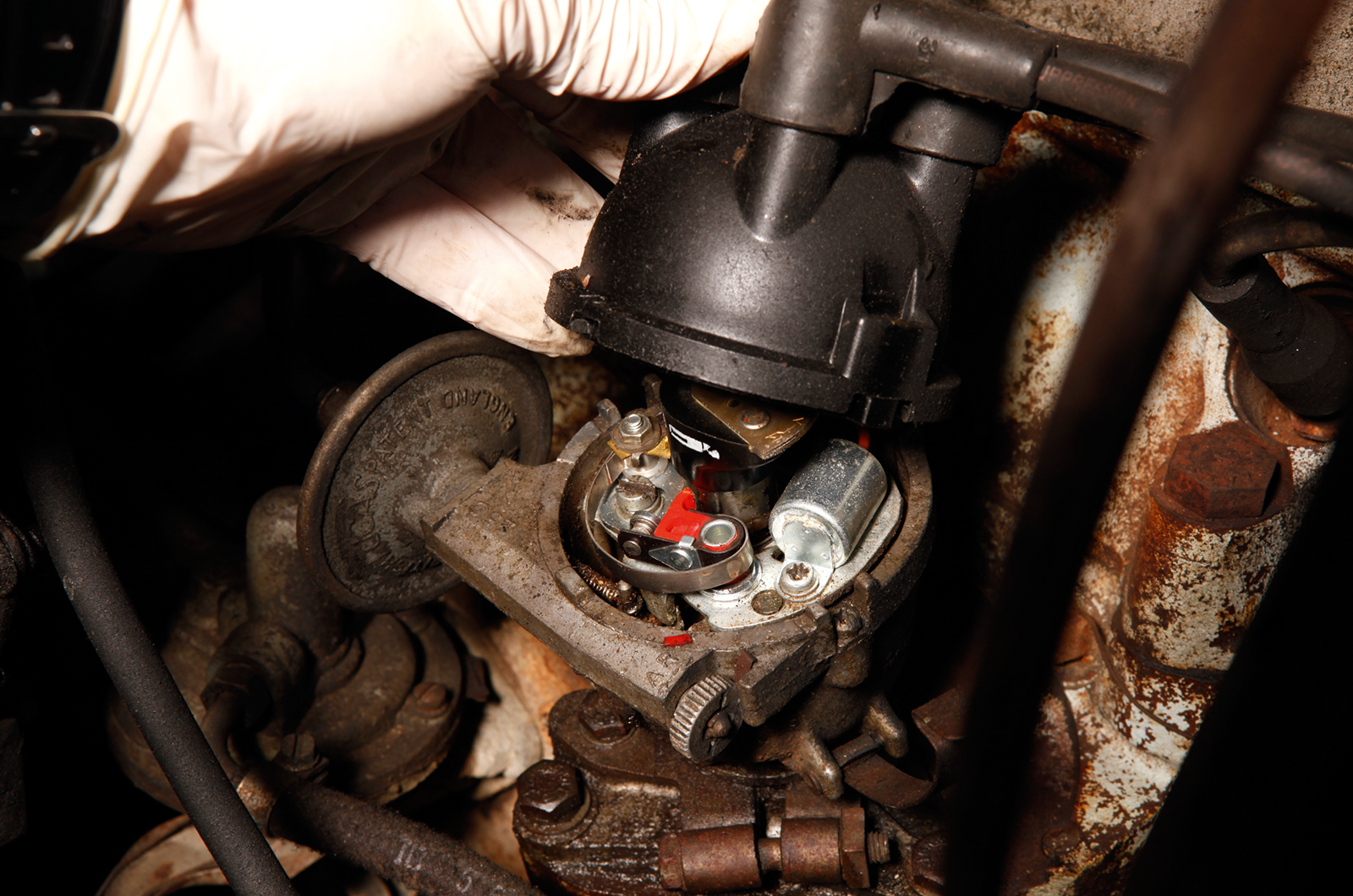
Disconnect the battery then take off the distributor cap and secure it out of the way.

